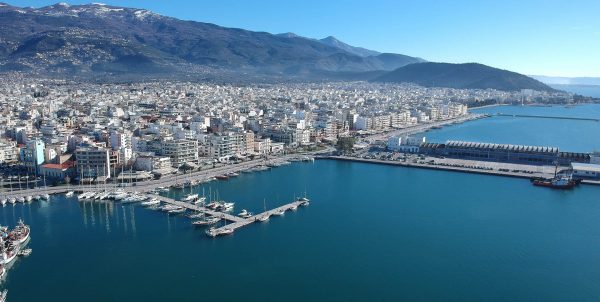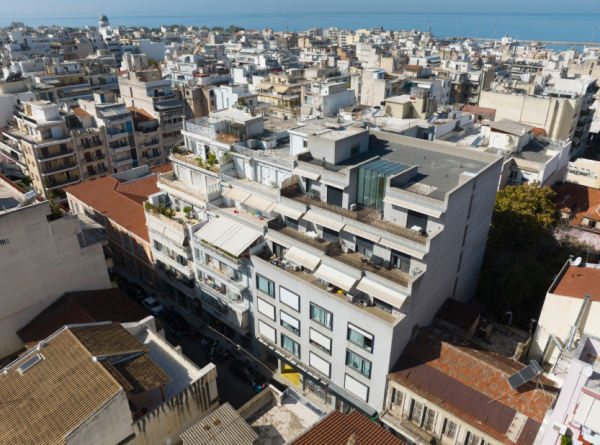
Renewable Energy Sources (RES) dominated Greece’s fuel mix in electricity generation for the whole of 2022. In particular, wind and photovoltaic parks, biomass units reached 35% and together with hydroelectric plants 41%. In fact, the gradual increase has been recorded for five years, as from approximately 10,000 GWh (gigawatt hours) provided by RES (excluding hydroelectric) in 2018, they increased to 10,600 GWh in 2019, to 13,700 GWh in 2020, to 16,100 GWh in 2021 and reached 17,500 GWh in 2022.
The need for more RES has been highlighted in the last year by the energy crisis and the rally in energy prices. As the president of ELETAEN (Hellenic Scientific Association of Wind Energy) Mr. Panagiotis Ladakakos mentioned yesterday, on the occasion of the publication of wind energy statistics for 2022, wind farms are projects of national importance sinces, as their penetration increases, the price of energy for the consumer and the country’s energy security and energy independence are strengthened. “The recent decline in natural gas prices should not be a disorientation. The longer we delay the energy transition, the more likely the energy price crisis will rebound,” he pointed out.
As for the other fuels, according to the Annual Analysis of the Greek Energy Market by IENE (Southeastern European Energy Institute), natural gas participated in electricity generation for 2022 with 38%, net imports with 14%, lignite with 12%. Imported electricity in particular stood at 8,790 MWh (megawatt hours), increased by 5.52%, compared to 2021 (8,330 MWh).
141% increase in wholesale electricity price
Meanwile, in 2022, the average Market Clearing Price (MCP) of electricity increased by 141%. In particular, according to the IENE report, the average wholesale price of electricity averaged 279.39 euros/MWh, increased by 141% compared to 2021 (116.02 euros/MWh). The significant increase in the price of domestic electricity is mainly attributed to the rise in natural gas prices in Europe and by extension in Greece and also to the impressive increase in pollutant prices, which in 2022 exceeded 98 euros per ton.
Over a period of five years, the average TEA has recorded a significant increase, as it has almost quintupled compared to the levels of 2018 and 2019. In particular, in 2018 it was at 60.4 euros/MWh, in 2019 at 63.8 euros/MWh, in 2020 at 45 euros/MWh, in 2021 at 116 euros/MWh and in 2022 at 279.39 euros/MWh.
Energy demand was down at 51.8 TWh (terawatt hours) in 2022, down just 1.25% compared to 2021, despite rising electricity prices. In fact, in the last five years the demand fluctuated at approximately the same levels, with the exception of 2020 when, due to the lockdowns, it had fallen to 48.9 TWh.
Gas imports reduced in 2022
In 2022, according to researchers at the Energy Institute of Southeast Europe, Greece’s total natural gas imports amounted to 62 TWh, down 12% year-on-year and being very close to 2020 levels (63 TWh).
Natural gas is imported into the National Natural Gas System (NGS) of Greece through four entry points, Sidirokastro on the Greece-Bulgaria border from which Russian natural gas enters, Kipi on the Evros on the Greece-Turkey border from which quantities of Turkish “basket” are imported “, Nea Mesimvria, i.e. the connection point of ESFA with the TAP pipeline which transports Azeri natural gas and Agia Triada opposite the island of Revythoussa where LNG is imported.
Of the total natural gas imports for 2022, 61% entered via Agia Triada, 14% via Sidirokastro, 4% via Kipi and 20% via Nea Mesimvria. Regarding the LNG arriving in Revythoussa, the USA remains the largest importer to Greece with a percentage of 51.29%. Algeria was in second place in 2022, followed by Egypt, Nigeria, Norway, Russia and Oman.
As for the weighted average import price of natural gas in 2022, it was set at 116.3 euros/MWh, registering a significant increase of 148% compared to 46.9 euros/MWh in 2021, while almost quintupling compared to 2018 levels.
Regarding the categories of natural gas consumers, the largest part of domestic consumption (73.55%) corresponds to the consumption of electricity production units, followed by household consumers and those connected to the grid, with a percentage of 21.50%, as well as cottagec industries, which are directly connected to the high pressure system of DESFA, with a percentage of 4.95%.
In fact, it is noteworthy that in 2022, an upward trend was recorded in the total demand for natural gas in Greece, driven mainly by exports, according to data from DESFA. Specifically, the total demand (domestic consumption and exports) of natural gas increased by 11.11%, reaching 86.18 TWh (from 77.56 TWh in 2021).
Essentially, the remarkable 288.68% increase recorded in natural gas exports (from 7.6 TWh in 2021 to 29.54 TWh in 2022) overshadowed the decrease in domestic consumption by 19.04% (from 69.96 TWh in 56.64 TWh). In particular, 34.27% of the total demand for 2022 related to natural gas exports, mainly to Bulgaria from the interconnection point in Sidirokastro, while smaller quantities of natural gas were also exported to Italy through the TAP pipeline from New Mesimvria.
Latest News

Mitsotakis Unveils €1 Billion Plan for Housing, Pensioners, Public investments
Greek Prime Minister Kyriakos Mitsotakis has announced a new set of economic support measures, worth 1 billion euros, aiming to provide financial relief to citizens.

Alter Ego Ventures Invests in Pioneering Gaming Company ‘Couch Heroes’
Alter Ego Ventures' participation in the share capital of Couch Heroes marks yet another investment by the Alter Ego Media Group in innovative companies with a focus on technology.

Corruption Still Plagues Greece’s Driving Tests
While traffic accidents continue to claim lives on Greek roads daily, irregularities and under-the-table dealings in the training and testing of new drivers remain disturbingly widespread

Pope Francis Died of Stroke and Heart Failure Vatican Confirms
As news of the official cause of death spread, tributes poured in from across the globe. The 1.4 billion-member Catholic Church is united in grief, remembering a pope who championed inclusion, justice, and compassion

Increase in Both Museum Visits, Revenues for 2024
As expected, the Acropolis was the top archeological site in the country, followed by Sounion, Mycenae, the ancient theater of Epidaurus, and Vergina in northern Greece

Where Greece’s Tourists Come From: A Look at 2025’s Top Visitor Markets
The United Kingdom continues to hold the top spot as the largest source of incoming tourism, with 5.6 million seats booked for Greece this summer — up 2.2% from last year. This accounts for 20% of all international air traffic to Greece

Pope Francis: A Pontiff Who Reshaped the Papacy and Sparked a Global Conversation
His first words from the balcony of St. Peter’s Basilica—“Brothers and sisters, good evening”—set the tone for a pontificate that would challenge norms, favor mercy over dogma, and bring the papacy closer to the people.

When Blue Skies was Unmasked as ND’s Political ‘Slush Fund’
The fact that so many top New Democracy (ND) party cadres were paid by the firm Blue Skies, owned by Thomas Varvitsiotis and Yiannis Olympios, without ever citing this publicly, raises very serious moral issues, regardless of the legality

Greek Women’s Water Polo Team Top in the World after 13-9 Win Over Hungary
The Greek team had previously defeated another tournament favorite, the Netherlands, to reach the final.

S&P Raises Greek Rating; BBB with Stable Outlook
S&P’s decision raises the Greek economy to the second notch of investment grade ladder, at BBB with a stable outlook.











![Πλημμύρες: Σημειώθηκαν σε επίπεδα ρεκόρ στην Ευρώπη το 2024 [γράφημα]](https://www.ot.gr/wp-content/uploads/2025/04/FLOOD_HUNGRY-90x90.jpg)




![Ξενοδοχεία: Μεγάλο το ενδιαφέρον για επενδύσεις στην Ελλάδα – Η θέση της Αθήνας [γραφήματα]](https://www.ot.gr/wp-content/uploads/2025/03/Athens-hotels-90x90.jpg)
























 Αριθμός Πιστοποίησης
Αριθμός Πιστοποίησης